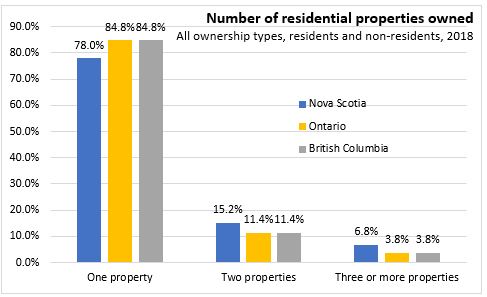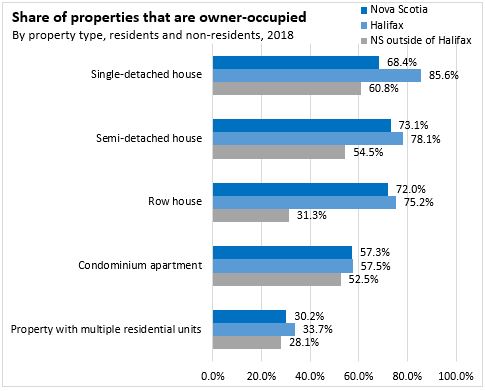The Economics and Statistics Division maintains archives of previous publications for accountability purposes, but makes no updates to keep these documents current with the latest data revisions from Statistics Canada. As a result, information in older documents may not be accurate. Please exercise caution when referring to older documents. For the latest information and historical data, please contact the individual listed to the right.
<--- Return to Archive
For additional information relating to this article, please contact:
June 11, 2019CANADIAN HOUSING STATISTICS PROGRAM Statistics Canada has released new data from the Canadian Housing Statistics Program on residential property ownership in Nova Scotia, Ontario and British Columbia. This includes demographic characteristics of residential property owners, including age, sex, and immigration status. Today's release also includes information on whether the property is the usual residence of the owner (i.e. owner occupied) and the number of properties owned.
In 2018, there were 504,380 residential property owners in Nova Scotia. Of these, 92.1 per cent were owned by resident individuals, 6.2 per cent were owned by non-resident individuals, and 1.8 per cent were owned by non-individuals (both residents and non-residents). Women accounted for 51.0 per cent of residential individual property owners. The average assessment value for individual resident owned properties ($220,000) was higher than for non-residents ($156,000).

In Nova Scotia, residential property owners were more likely to be born before 1960 compared to homeowners in Ontario and British Columbia. Millennials (those born between 1980 and 1999) represented a smaller share of homeowners in Nova Scotia (11.7 per cent) compared to Ontario (15.1 per cent) and British Columbia (13.8 per cent).

As a share of the population, millennials represented 29.6 per cent of the population aged 18 and over in Nova Scotia in 2018 (population as of July 1). Residential property owners were most likely to be born before 1960, a group reflecting 35.8 per cent of the population in 2018.

Of residential property owners in 2018, 78.0 per cent only owned one property in Nova Scotia. Another 15.2 per cent owned two properties and 6.8 per cent owned three or more residential properties. Residential property owners in Ontario and British Columbia were more likely to own a single property (84.8 per cent) compared to owners in Nova Scotia.

Single-detached, semi-detached, and row houses were more likely to be owner-occupied than condominium apartments or properties with multiple residential units in Nova Scotia. In 2018, 85.6 per cent of single-detached houses were owner-occupied in Halifax compared to 60.8 per cent outside of Halifax. In Nova Scotia, 57.3 per cent of condominium apartments and 30.2 per cent of properties with multiple residential units were owner-occupied.

Immigrants reflected 3.7 per cent of residential property owners in Nova Scotia compared to 23.1 per cent in Ontario and 23.0 per cent in British Columbia. Recent immigrants (those who arrived from 2009 to 2016) made up the smallest share of immigrant owners in all three provinces, while those arriving from 1980 to 2008 represented the majority of immigrant owners. Immigrant owners were more likely to have been admitted to Canada through the economic admission category.
Source: Canadian Housing Statistics Program, 2018
<--- Return to Archive